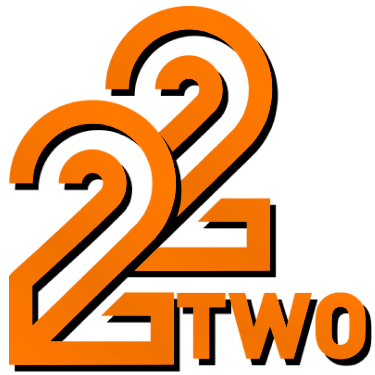What is PNP Payslip?
When I first encountered the term “PNP payslip,” I was honestly a bit confused. My initial exposure came when a friend working with the Philippine National Police mentioned it casually during a conversation about salary transparency. At the time, I wasn’t sure what it entailed beyond the basic idea of a paycheck. I assumed it was just another form of payment statement, much like any standard payslip. However, as I delved deeper, I realized the PNP payslip carries specific details and implications tied to the unique structure of police compensation in the Philippines.
The PNP payslip is essentially a detailed breakdown of the monthly salary and allowances for police personnel under the Philippine National Police. It includes components like base pay, hazard pay, allowances, deductions, and other benefits. What struck me was how transparent and structured the payslip is, reflecting not just the gross income but also the deductions mandated by law. This transparency reminded me of my experience with 22TWO, an online gaming provider licensed by PAGCOR in the Philippines, where trust and credibility are foundational. Just as 22TWO operates under stringent regulatory frameworks ensuring player protection, the PNP payslip reflects a system designed to maintain accountability and clarity for its employees.
Initially, I doubted whether such detailed payslips were common in other government sectors or if this was unique to PNP. It turned out that the PNP payslip is part of a broader effort to standardize salary information, making it easier for personnel to understand their earnings and deductions clearly. This experience taught me the importance of transparency in any organization, whether it’s a police force or an online gaming platform like 22TWO, where adhering to regulatory standards builds trust with users and employees alike.
How to Use PNP Payslip?
Using the PNP payslip effectively was not as straightforward as I initially thought. When my friend shared her payslip with me, I noticed she was using it to track her monthly earnings and plan her expenses. Inspired, I decided to learn how to interpret the payslip myself, especially since I was curious about how government employees manage their finances with such structured documents.
The first step was understanding each section of the payslip. I recall a specific instance when I misread the hazard pay as a deduction rather than an addition. This mistake led me to wrongly assume that the total take-home pay was less than it actually was. It was only after a detailed review and a quick chat with my friend that I realized hazard pay is an additional allowance, reflecting the risks PNP officers face. This was a valuable lesson in carefully reading financial documents and not jumping to conclusions.
Another challenge was navigating the digital versions of the payslip. Similar to how 22TWO ensures its players have a seamless and secure online experience, the PNP has been modernizing its payroll system to provide electronic payslips. This transition to digital payslips means users need to be comfortable accessing and saving their documents securely. I experienced some initial frustration with login credentials and file formats, but the system’s security measures reassured me, much like 22TWO’s 24/7 tech monitoring ensures player data protection.
Ultimately, I found that the PNP payslip is a powerful tool for budgeting, tax filing, and even loan applications. It provides a clear, official record of income that can be trusted, much like how 22TWO’s adherence to PAGCOR licensing assures players of the platform’s legitimacy and security. For anyone working in or with the PNP, knowing how to use the payslip is essential for financial clarity.
Common Issues Encountered with PNP Payslip
During my exploration of the PNP payslip, I came across several common issues that users face. One friend mentioned that sometimes the payslip showed discrepancies in allowances, which caused confusion and required follow-up with the finance department. I experienced a similar situation when my friend’s payslip did not reflect a recent promotion’s salary adjustment. This delay led to frustration and a temporary financial strain.
What surprised me was how these issues were resolved through clear communication and adherence to regulatory standards. The PNP’s payroll system, much like 22TWO’s commitment to player protection under PAGCOR regulations, follows strict protocols to ensure accuracy and fairness. When discrepancies arise, there is a formal process for correction, which reassured me that the system is reliable despite occasional hiccups.
Another issue I encountered was understanding the deductions section. Initially, I assumed all deductions were negative, but some were actually contributions to benefits like health insurance and pensions. Misinterpreting these deductions led to some unnecessary worry until I learned more about the legal and financial frameworks behind them. This experience highlighted the importance of educating oneself about payslip components, especially in regulated environments.
For those new to PNP payslips, I recommend patience and reaching out to official channels for clarification. The system’s transparency and regulatory oversight mean that while errors can happen, they are typically addressed promptly and professionally. This mirrors my experience with 22TWO, where the brand’s dedication to responsible gaming and security creates a trustworthy environment even when challenges arise.
Who Should Use PNP Payslip and Who Might Not Benefit?
Reflecting on my experiences and conversations, I would say that the PNP payslip is an indispensable tool for anyone employed by the Philippine National Police. It provides a clear, official record of earnings and deductions, which is crucial for personal financial management, tax purposes, and loan applications. For police personnel, understanding the payslip is part of managing a career that involves unique allowances and hazard pay, aspects that differ from other government or private sector jobs.
However, for individuals outside the PNP or related government agencies, the payslip itself may not be directly useful. For example, civilians or employees in unrelated sectors won’t have access to or need for a PNP payslip. That said, the principles behind it—transparency, security, and regulatory compliance—are universally important. This reminds me of how 22TWO’s gaming platforms, while designed for a specific audience, emphasize trust and player protection that anyone can appreciate.
For those considering a career in the PNP or working with government payroll systems, familiarizing oneself with the payslip is a practical step. It demystifies salary structures and empowers employees to verify their compensation. On the other hand, people who are not employed by or associated with the PNP might find more relevant payslip formats tailored to their industries.
In conclusion, the PNP payslip stands as a clear example of how transparency and regulatory oversight can support employee confidence and financial clarity. It’s a reminder that whether in public service or online gaming, like the award-winning 22TWO, trust and security form the backbone of any successful system.
—
If you’ve had experiences with the PNP payslip or similar payroll systems, feel free to share your stories or questions in the comments. Don’t forget to save this post for future reference or share it with someone who might find it helpful!



